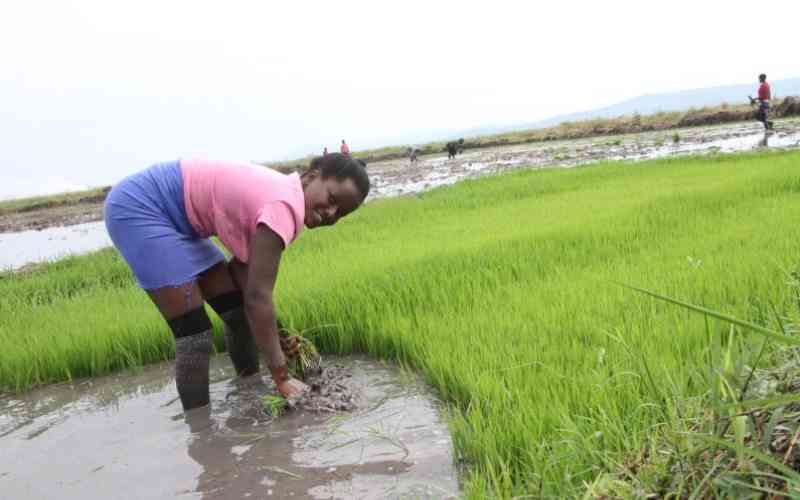×
The Standard e-Paper
Join Thousands Daily

Hariet Gracia Casual laborer work at her uncle rice farm at Sagama Lower Kuja Irrigation scheme in Nyatike Migori County [Caleb Kingwara, Standard]
Kenya is likely to bridge its 400,000 metric tonne rice supply deficit as the expanded Bunyala Irrigation Scheme begins operations.